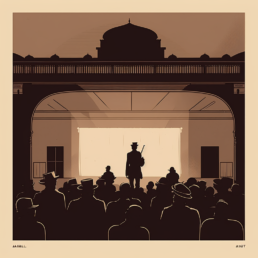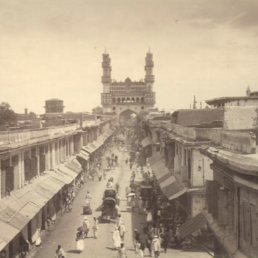Standing on The Amsterdam Museum Quarter on Paulus Potterstraat 2, 1071 CZ, the Royal Coster Diamonds, is presumably the oldest diamond polishing factory still in operation with an intriguing connection to the subcontinent.
In the 1840s, the East India Company and the Sikh Empire were at loggerheads; the death of Ranjit Singh had sent their mutual understanding spiralling out of control. What soon followed were a couple of wars and an almost complete annexation of Punjab under the treaty of Lahore.
Among the various stipulations of the treaty, there was a mention of the Koh-i-noor. ‘The gem called the Koh-i-Noor, which was taken from Shah Sooja-ool-moolk by Maharajah Runjeet Singh, shall be surrendered by the Maharajah of Lahore to the Queen of England’.
A year later, the jewel, sealed in a small, iron safe inside a red dispatch box, made its way to the British Isles where It was presented at the Great Exhibition. The diamond, though precious and awe-inspiring, drew slack due to its bulky appearance.
That is when Albert, the Prince Consort, decided to have the diamond cut. The task was given to a firm of Dutch Diamond merchants – Coster Diamonds. They sent their best to the task immediately – L.B. Voorzanger and J.A. Feder.
The cutting took 38 days, and it reduced the jewel’s size considerably. Voorzanger had to take some tough decisions in the process, but many believe it was necessary. The final weight came out to be 105.6 carats from its previous 186 carats.
It is supposed to have stumped the former owner of the jewel, Raja Duleep Singh, when he was shown the polished version. Voorzanger’s work was impeccable and recutting of the stone made quite the headlines in London then.
The Diamond polishing factory was originally established by Mozes Elias Coster near the Waterlooplein, in Amsterdam. After Moses’s death, his son Marin took over the firm until he went to Paris. The firm was then managed by Abraham Eliazer Daniëls.
The koh-i-noor’s refashioning earned the firm much fame and soon their attention turned to another diamond, Star of the South. The huge diamond was supposedly mined in 1853 in the Brazillian mines near the city of Estrela do Sul, located just north of Brasília.
After changing several hands, the jewel weighing almost 254 carats landed at the Coster firm, where Voorzanger again was tasked to polish it. The polished diamond was then sold to a French Syndicate that named it the Estrella do Sud or Star of the South.
After several years, an Indian prince, Prince Malhār Rāo of the Royal Family of Gaekwad, bought the Diamond for a whopping £80,000. The diamond was later mounted on a necklace that had another remarkable gem, the English Dresden.
The Dresden which gets its name from E. Dresden, the original owner of the gem, was mined from around the same place as the Star of the South. Weighing 119 carats it was much smaller than the other two.
After being polished at the Coster firm, it weighed around 76.5 carats. Mr. Dresden was so impressed by the firm’s work and the diamond’s purity, he said: “There is no diamond known in the world to come up to it.”
Under a remarkable set of circumstances involving the Civil Wars in the USA and a Bombay cotton Merchant, the Dresden finally found its way to Malhār Rao and the Gaekwad Family. Its current whereabouts however, remain unknown.
According to The Pittsburgh Press in 1927, the diamond necklace which had both the Star of the South diamond and the English Dresden was part of a royal collection worth $10,000,000 in those days. It was housed in the Nazar Bāgh Palace in Baroda.
Voorzanger won a silver medal for his skill and craft at the World Exhibition in Paris in 1855. Martin Coster was made Consul General of the Netherlands by King William III and remained an influential figure in the diamond-cutting business until his death.
Sources: https://www.royalcoster.com/; Edwin W Streeter, The great diamonds of the world. Their history and romance, G. Bell & Sons; https://internetstones.com/star-of-the-south-diamond-famous-jewelry.html




